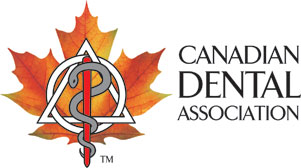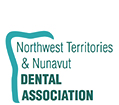December 11, 2023 – Ottawa, ON: Today, the federal government announced its phased rollout of the Canadian Dental Care Plan (CDCP), starting with eligible seniors aged 87 and over who can begin enrollment in December 2023. The CDCP is a federal government program that represents a once-in-a-lifetime opportunity to make significant improvements to the oral and overall health of millions of Canadian residents who do not have access to dental care.
“Our objective from the beginning has been to advocate for a plan that benefits all Canadians. We anticipate more information about the CDCP over the coming months and commit to provide advice and recommendations to Health Canada to ensure this program begins on the right footing,” says CDA President, Dr. Heather Carr. “The Canadian Dental Association (CDA) commends the collaborative efforts of provincial and territorial dental associations and stakeholders who are working diligently to provide insights and technical expertise to the government for the implementation of the federal program. While this is an important first step in enhancing access to care for eligible seniors, our collective wish for the CDCP is to ensure that it delivers optimal and barrier-free oral health care. CDA will continue to work towards this end goal for our patients.”
CDA has reinforced from the onset of the development of the CDCP that if the federal government gets it right, this new program has the potential to support the oral health and well-being of eligible low-income Canadian residents who face barriers to dental care, as well as empower dentists to focus on what they do best—caring for patients’ oral health.
In February 2023, CDA released a proposed framework for the CDCP. Bridging the Financial Gap in Dental Care is a policy roadmap for the federal government and includes a set of recommendations to enhance access to dental care for all Canadians. CDA remains hopeful that the CDCP adopts all of our key recommendations. We look forward to discussions with the government regarding the program over the coming months. Our guiding principles remain that any federally funded dental care program should:
- be compatible with a holistic approach to oral health that acknowledges the interconnection between oral health and general health and well-being;
- promote patient-centred care and a patient’s right to choose their provider;
- prioritize preventative care; and
- support the delivery of care primarily through the existing network of dental offices, supplemented as needed by public clinics.
CDA believes that any government program should not disrupt Canada’s existing oral health care system. This includes safeguarding patients’ access to dental care by respecting the current workplace, school and/or group dental insurance system. It should also work with existing federal, provincial and territorial government dental programs so that patients can get all the care they need.
About the CDCP:
The federal government will expand enrollment for CDCP in a phased approach. Enrolment will begin for eligible seniors 87 and above in December 2023, expanding in phases to those aged 77 to 86 in January 2024, followed by those aged 72 to 76 in February 2024 and then those aged 70 to 71 years in March 2024. Eligible seniors aged 70 years and above will receive a letter inviting them to apply for the CDCP. In May 2024, the enrolment process for eligible Canadian residents will switch to an online platform. Seniors between the ages of 65-69 will be able to enroll in May 2024. Individuals receiving a Federal Disability Tax Credit and children under 18 can enroll in June 2024.
Applications are to be made to Service Canada. Upon receiving the letter, seniors are encouraged to contact Service Canada to verify their eligibility for the program. To qualify for the CDCP, individuals will need to meet eligibility criteria, including:
- have no access to employer/pension-sponsored or private dental insurance;
- have an annual household income of under $90,000;
- be a Canadian resident; and
- have filed tax returns in the previous year.
Once enrolled, Canadian residents who qualify will receive a welcome package from Sun Life including information on the CDCP, coverage details, a member card and a start date for when their oral health care service will be covered under the CDCP. Canadian dental offices can expect to see individuals covered under the CDCP, starting with seniors, in May 2024.
Dentists who are licensed and in good standing with their provincial and territorial regulatory body will be able to enroll on a voluntary basis to participate in the CDCP in early 2024. Dental offices will be required to submit claims directly to Sun Life for payment. A provider awareness campaign will be launched, with the support of Sun Life, that will invite providers to enroll. The CDCP will reimburse only a percentage of eligible expenses, with some individuals having a co-payment. More details about the federal government program, including what dental care services will be covered, can be found here.
Media Contact:
Jeff D’Andrea
Media Relations Specialist
Spécialiste des relations avec les médias
Canadian Dental Association
613-523-7963
media@cda-adc.ca
Backgrounder:
About the Canadian Dental Association
Founded in 1902, the Canadian Dental Association (CDA) is an association that has no regulatory role. It is a federally incorporated not-for-profit organization whose corporate members are Canada’s provincial and territorial dental associations (PTDAs). CDA represents over 21,000 practising dentists nationwide and is a trusted brand and source of information for and about the dental profession on national and international issues.
- Dentists and dental offices: As of 2023, there are approximately 26,240 licensed dentists in Canada, operating out of roughly 15,000 dental offices.
- Dentist workforce: In 2023, the population to dentist ratio in Canada is approximately 1530 Canadians per dentist, but there is a wide variation from a high of 2100 Canadians per dentist in New Brunswick to a low of 1230 Canadian per dentist in Ontario. The national ratio has approximately doubled since the 1960s.
- Dental benefits: In 2022, approximately 55% of Canadians report having private dental benefits. Also, 69% of people aged 35 to 49 years reported having private dental insurance, which was more than twice as high as those aged 65 years and older (33%). (Statistics Canada, 2023)
- Visiting the dentist: Canadians with health benefits are more likely to visit a dentist (76%) than those without (51%). Regardless of coverage, Canadians with lower household income were less likely to go to a dentist than those in higher income households. (Statistics Canada, 2023)
- Dental utilization: Nearly two-thirds (65%) of Canadians reported having seen a dental professional in the 12 months preceding the 2022 Canadian Community Health Survey. Younger Canadians aged 12 to 17 years (79%) more frequently reported having seen a dental professional than those aged 65 years and older (60%).
- Dental expenditures in Canada: In 2023, a total of $19.6 billion was forecasted to be spent on dental care in Canada, with roughly 94% coming from the private sector. This works out to $499 per capita. Overall, this accounts for 5.7% of Canada’s overall health care expenses. Approximately $1.2 billion dollars of dental spending was from public sources. (Canadian Institute for Health Information, 2023).
- Oral health disease prevalence: According to the World Health Organization’s (WHO) global oral health status report 2022, globally close to 3.5 billion people (approximately 50% of the population) suffer from at least one form of oral disease and the global burden of oral diseases exceeds the combined global burden of the next five most prevalent non-communicable diseases by almost a billion cases. (World Health Organization, 2022)
- Seniors aged 87 and over: Over 861,000 people aged 85 and older were counted in the 2021 Census, representing 2.3% of the population., and more than twice the number observed in the 2001 Census. (Statistics Canada, 2022)
- Seniors in collective dwellings: In 2021, almost 238,000 people aged 85 and older were living in these collective dwellings, representing close to 3 in 10 people (28%) in this age group. Collective dwellings are places such as seniors’ residences, nursing care facilities and long-term care facilities — places where they can receive care and support. (Statistics Canada, 2023)











